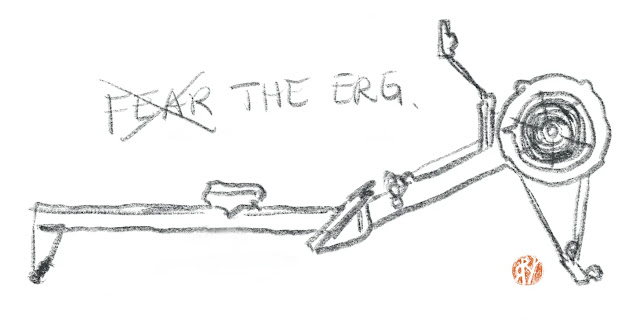Charles Chat: Riverside's Sean Wolf on Taking the Best Line in Boston
 |
| Wolf racing the Head Of The Charles (Photo courtesy Igor Belakovskiy) |
The Head Of The Charles is looming ever larger this weekend, and the rowing world has already begun to descend upon Boston. The Charles is a fantastic, fun race, and a challenging course. Here, we check in with friend of RR Sean Wolf of Riverside Boat Club and Rowing Illustrated—a man who has spent many morning and evening flying down that famous stretch of river—about what he feels are the most difficult turns on the course, and how to approach them.
RR: I’m not calling you old, but you’re one of the ‘venerable’ (old) Charles competitors, so it seemed only right to check in with you on what you feel is the most difficult turn at the Head Of The Charles, and how to handle it.
Sean Wolf: [Laughs] It’s a good question. Everyone talks about [John W.] Weeks Bridge—I always stress to people that it’s not so much about messing up as you begin the turn, it’s how you recover from a mistake. Sometimes people just don’t recover in the right way, if that makes sense. Most people don’t get it 100 percent right—Weeks is a difficult turn. If you don’t come through Weeks right, you could be totally thrown off for Anderson [Memorial] Bridge. I come through Weeks, I find my point off the clock tower—when I finish up with my turn, I look straight up, find the clock tower there and use the base of the clock tower to take a direct line from the tower to the right side of Anderson Bridge.
Most people, if they don’t approach Weeks right, then they don’t recover, and it just spirals out of control by the time they reach Anderson. It’s important not to overcorrect—you can lose 10 seconds in that stretch if you try to do too much.
For me, I worry about Boston University Bridge when they set up the chute—there are too many of us that end up hitting the B.U. Bridge depending on the way they line up the starting queue because we’re just used to approaching it in a different way. So that’s my own little struggle getting through there—I usually get it down, but it’s always in the back of my mind.
RR: What about the age-old debate about the right-hand arches versus the center arches on the Powerhouse Stretch?
SW: It’s all about what’s going on in front of you, if you are passing people. For years international crews have come down and used those right-hand arches to just blow by a couple boats if they start in the back of the pack, and a lot of the hometown scullers, if the turn is set up right, will go through the first right arch. However, you can get lost if you’re trying to get over to the right arch and get sucked into shore if you don’t do it right. I always tell people that when you come off the turn, see where you are—you don’t want to overcorrect either direction. If you end up more toward the middle, then go for the straight shot. If you end up more on the right side, then go right first then center. The fastest shot, I’ve always felt, is to go right, center, center through the three bridge of the Powerhouse Stretch. But again, it all depends on how you come off that Magazine Beach turn—you don’t want to spend time correcting, you just want to take that straight shot and go.
RR: I’d be remiss if I didn’t ask you about the increasingly famous (infamous?) Riverside party on Sunday night. There’s a video floating around using some of The Spracklen Philosophy that even Kevin Light thought was pretty funny.
At first I was like hey you stole my audio, but then I was like ok well done I'm laughing. @row2k @rowingrelated https://t.co/HuKy5PtyZq
— Kevin Light (@KevinRLight) October 15, 2013
SW: It’s the party to go to—my company, WinTech King, is sponsoring it this year along with Riverside. We’re looking forward to a great time, people getting together from all levels of rowing just to have some drinks and tell some good stories. And as for the rest—how does that Las Vegas slogan go?
Thanks very much to Sean for taking the time, and good luck to everyone racing in Boston this weekend!
-RR



